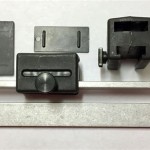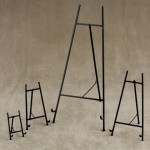DIY Bathroom Mirror Borders: Elevating Your Space with Personalized Style
A bathroom mirror is often a functional necessity, but with a touch of creativity and DIY effort, it can become a focal point that elevates the entire aesthetic of the room. Creating a border for a bathroom mirror is a cost-effective and impactful way to add personality, style, and sophistication to your bathroom decor. This article explores several innovative and accessible DIY border ideas for bathroom mirrors, detailing the materials required, the steps involved, and considerations for achieving professional-looking results.
Key Point 1: Understanding the Benefits and Choosing the Right Materials
Before embarking on a DIY mirror border project, it is important to understand the benefits and select the most appropriate materials. Mirror borders offer numerous advantages, including enhancing the mirror's visual appeal, complementing the overall bathroom design, and hiding any imperfections around the mirror's edges. The choice of materials will significantly influence the final aesthetic and the longevity of the border. Considerations should include the bathroom's existing style, the desired level of formality, and the susceptibility of materials to moisture and humidity.
Several factors should be considered when choosing materials for a DIY bathroom mirror border. Moisture resistance is paramount in a bathroom environment. Avoid materials that readily absorb water or are prone to warping or deterioration when exposed to humidity. Durability is also a key factor, as the border should withstand the rigors of daily use and cleaning. It is important to consider the ease of installation and working with different materials, especially for individuals with limited DIY experience. The aesthetic appeal of the material should align with the overall style of the bathroom, whether it is modern, traditional, rustic, or eclectic.
Popular material options for DIY bathroom mirror borders include:
*Wood:
Wood offers a warm and traditional aesthetic and can be easily painted or stained to match any decor. However, it requires proper sealing to protect it from moisture. Common wood choices include pine, poplar, and cedar, with cedar offering natural water resistance. Pre-primed MDF (medium-density fiberboard) can also be used, but it must be thoroughly sealed. *Tile:
Tile is an excellent option for bathroom mirror borders due to its inherent water resistance and durability. Ceramic, porcelain, and glass tiles are all suitable choices. Tile adds a touch of elegance and sophistication to the bathroom. *Stone:
Natural stone, such as slate, river rock, or travertine, can create a rustic and organic look. Stone is highly durable and water-resistant but can be more challenging to work with due to its weight and irregular shapes. *Metal:
Metal borders, such as brushed nickel, chrome, or copper, offer a sleek and modern aesthetic. Metal is durable and water-resistant but may require special tools for cutting and installation. *Rope:
Rope, particularly nautical rope, can add a coastal or bohemian flair to the bathroom. It is relatively inexpensive and easy to work with, but it may require regular cleaning to prevent mold and mildew growth. *Plastic/Acrylic:
Lightweight and water-resistant, plastic or acrylic options allow for a range of colors and styles and are relatively easy to cut and install. These can mimic other more pricey materials.Tools required for DIY mirror border projects typically include a measuring tape, pencil, saw (for wood or metal), tile cutter (for tile), adhesive (appropriate for the chosen material), level, sandpaper, paint or stain (if desired), sealant (especially for wood), safety glasses, and work gloves.
Key Point 2: Step-by-Step Guide to Creating Common Border Styles
The process of creating a DIY bathroom mirror border involves several key steps, from measuring and cutting the materials to adhering them to the mirror surface. The specific steps will vary depending on the chosen material and border style. Here are three common border styles and their corresponding installation processes:
1. Wood Border:
a.
Measure and Cut:
Accurately measure the dimensions of the mirror, including the desired width of the border. Cut the wood pieces to the appropriate lengths, ensuring clean and precise cuts. It is essential to use a miter saw for making 45-degree angled cuts if creating a traditional picture frame border to ensure tight corners.b.
Sand and Finish:
Sand the wood pieces to create a smooth surface. Apply primer, followed by paint or stain, to achieve the desired color and finish. Allow the paint or stain to dry completely before proceeding.c.
Assemble the Frame:
Assemble the wood frame using wood glue and clamps. Ensure that the corners are aligned correctly and that the frame is square. Allow the glue to dry completely.d.
Attach to the Mirror:
Apply a bead of construction adhesive or mirror adhesive to the back of the wood frame. Carefully position the frame around the mirror and press firmly to ensure a secure bond. Use painter's tape to hold the frame in place while the adhesive dries.e.
Seal the Edges:
Apply a bead of sealant along the inside edge of the frame where it meets the mirror surface to prevent moisture from seeping behind the border.2. Tile Border:
a.
Prepare the Surface:
Clean the mirror surface thoroughly to remove any dirt or debris. Lightly score the area where the tiles will be attached with sandpaper to improve adhesion.b.
Layout the Tiles:
Dry-fit the tiles around the mirror to determine the optimal layout and spacing. Use tile spacers to maintain consistent gaps between the tiles.c.
Apply Adhesive:
Apply a thin layer of tile adhesive to the back of each tile. Carefully position the tile on the mirror surface and press firmly. Use tile spacers to maintain consistent gaps.d.
Grout the Tiles:
Once the adhesive has dried completely, apply grout to fill the gaps between the tiles. Use a grout float to press the grout into the gaps evenly.e.
Clean and Seal:
Wipe away excess grout with a damp sponge. Allow the grout to dry completely, then seal the grout lines with a grout sealant to prevent staining and water damage.3. Rope Border:
a.
Measure and Cut:
Measure the perimeter of the mirror and cut the rope to the appropriate length, adding a few extra inches for overlap.b.
Attach the Rope:
Apply a bead of hot glue or construction adhesive to the back of the rope. Carefully position the rope around the edge of the mirror, pressing firmly to ensure a secure bond. Overlap the ends of the rope slightly and secure with glue.c.
Add Embellishments (Optional):
Enhance the rope border with nautical embellishments, such as shells, starfish, or small pieces of driftwood. Attach these embellishments using hot glue.Key Point 3: Ensuring Safety and Addressing Common Challenges
Safety precautions are vital when undertaking any DIY project, especially one involving tools and potentially hazardous materials. Eye protection, such as safety glasses, should be worn at all times when cutting or sanding materials. Gloves protect hands from splinters, adhesives, and other irritants. A well-ventilated workspace is crucial when working with paints, stains, adhesives, and sealants.
Common challenges encountered during DIY mirror border projects include uneven surfaces, difficulty cutting materials accurately, and ensuring proper adhesion. To address uneven surfaces, use shims or leveling compounds to create a flat and even base for the border. For accurate cuts, invest in quality cutting tools and practice making test cuts on scrap material. To ensure proper adhesion, thoroughly clean the mirror surface and use an adhesive that is specifically designed for the chosen materials. Apply even pressure to the border while the adhesive dries, and use painter's tape to hold it in place if necessary.
Maintaining the cleanliness and longevity of the mirror border requires regular cleaning and proper care. Clean the border with a mild soap and water solution, avoiding harsh chemicals or abrasive cleaners that can damage the materials. Dry the border thoroughly after cleaning to prevent water spots and mildew growth. For wood borders, reapply sealant periodically to maintain its water resistance. Inspect the border regularly for any signs of damage or deterioration and make repairs as needed.
Beyond the practical considerations of material selection and installation, the design possibilities for DIY mirror borders are virtually limitless. Consider incorporating personal touches and creative elements to make the border truly unique. For example, mosaics created from broken tiles or glass can add a vibrant and artistic touch. Incorporating found objects, such as sea glass, pebbles, or vintage buttons, can create a personalized and eclectic look. Experimenting with different textures, colors, and patterns can result in a truly one-of-a-kind bathroom mirror border that reflects individual style and creativity.

Mirror Frame Diy How To Update A Basic Bathroom Our Faux Farmhouse

Mirror Frame Diy How To Update A Basic Bathroom Our Faux Farmhouse

Diy Stick On Mirror Frame Sawdust Sisters

How To Frame Out That Builder Basic Bathroom Mirror For 20 Or Less

How To Frame A Mirror

Diy Bathroom Mirror Frame With Molding The Happier Homemaker

Easy Diy Tutorial Adding Trim Around A Giant Mirror For Ers

Build A Wood Mirror Frame With This Easy Diy Building Bluebird

Diy Bathroom Mirror Frame Without Removing Clips Her Happy Home

Diy Bathroom Mirror Frame For Under 10 O Hayley Blog








